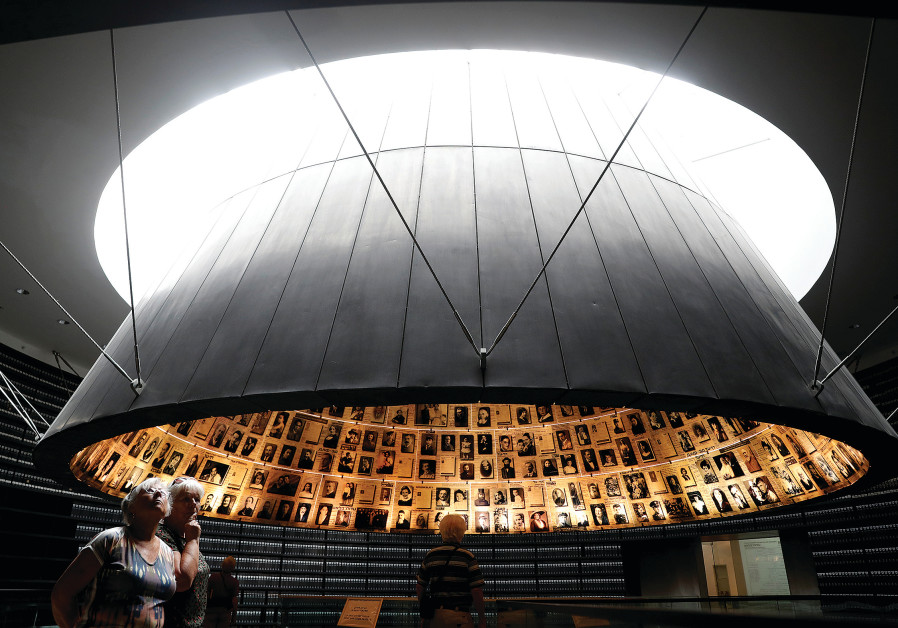The opinions expressed on this webpage represent those of the individual authors and, unless clearly labeled as such, do not represent the opinions or policies of TBS.
Ancestry.com digitizes millions of Holocaust records, free to public
The project contains approximately 1.2 million digitized images, which are searchable by entering a person’s basic demographic information.
By SONIA EPSTEIN – August 4, 2019

PEOPLE VISIT the Hall of Names at the Yad Vashem World Holocaust Remembrance Center in May. . (photo credit: RONEN ZVULUN / REUTERS)
A digital, searchable archive of Holocaust records is now available to users around the world via the website Ancestry.com.
Ancestry, the consumer genetics and genealogy giant, partnered with the Germany-based Arolsen Archives to produce the online database, called the Holocaust Remembrance Collection. The archives, previously known as the International Tracing Service (ITS), holds more than 30 million documents on Nazi persecution, containing information on 17.5 million victims and survivors of National Socialism.
The digitized archive, available on Ancestry.com as of July 31, includes two separate collections.
“Africa, Asia and Europe Passenger Lists of Displaced Persons” tracks displaced people who left Germany and other European countries from 1946 to 1971. The 1.7 million records in the collection mostly document the journeys of Holocaust survivors, former concentration camp inmates and slave laborers, and refugees from Central and Eastern European countries as they traveled to different countries, especially America, after the war.
The second collection, “Registration of Foreigners and German Individuals Persecuted” includes 9.97 million records from 1939 to 1947 documenting persecution faced by German Jews, people with non-German citizenship, and stateless people living in Germany and areas of German occupation. The documents are not restricted to those who were imprisoned in camps and include information on the deceased, such as burial records.
All together, the project contains approximately 1.2 million digitized images, which are searchable by entering a person’s basic demographic information.
Previously, accessing these records required submitting manual requests for copies of the documents.
The new project is part of what Ancestry describes as its “philanthropic initiative to make culturally important records available to everyone,” according to its vice president of media Monique Dinor.
It is also personally important to Ancestry’s chief financial officer and chief operating officer Howard Hochhauser, who used the Arolsen Archives and the US Holocaust Memorial Museum to learn more about his grandmother’s experiences in Germany during the Holocaust.
“Sharing her story of strength, struggle and resiliency with my family was a powerful and moving moment, and one I’ll never forget,” he said in a press release. “This collection will help people learn more about the magnitude of the Holocaust, those who lived through it and those who perished as a result of it.”
Today, with more than 70 years having passed since the Holocaust and the number of survivors dwindling, organizations are seeking to make records more widely available. Digital copies of the Arolsen Archives will also be available on the websites of Yad Vashem and the Holocaust Memorial Museum in Washington, DC.
Records available online include those from the American Zone of postwar occupied Germany. In early 2020, Ancestry plans to continue digitizing documents from the British, French and Soviet Zones.
